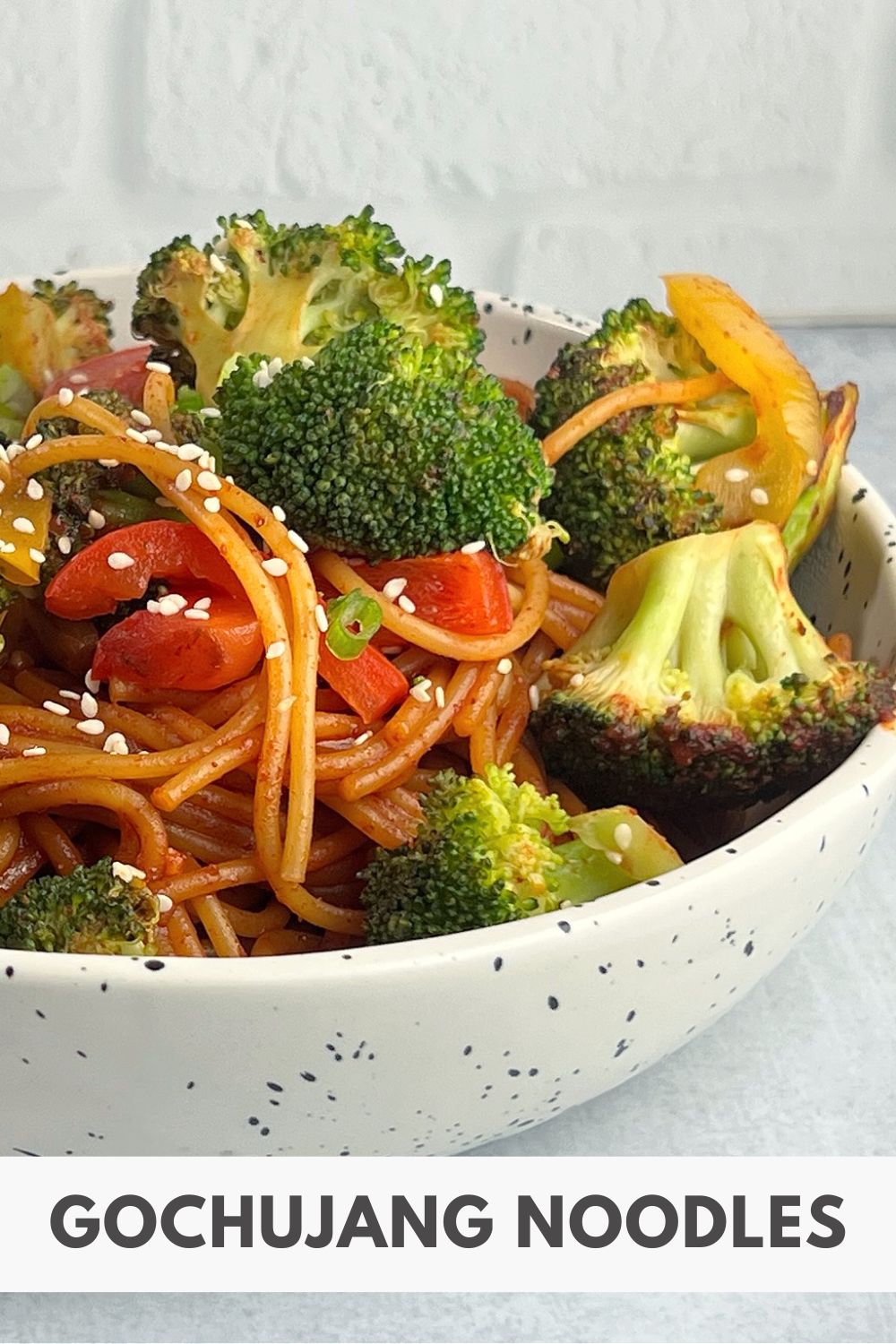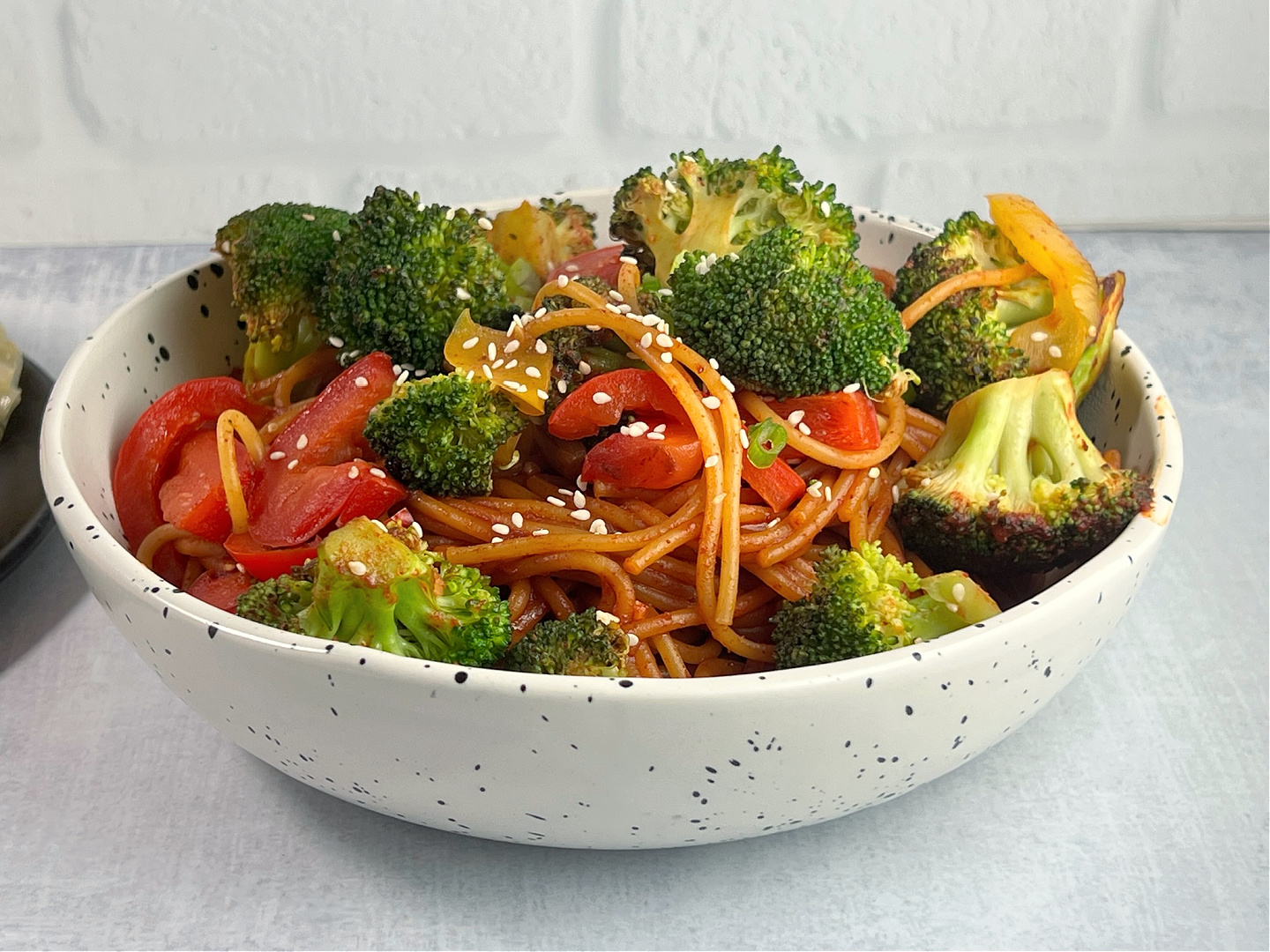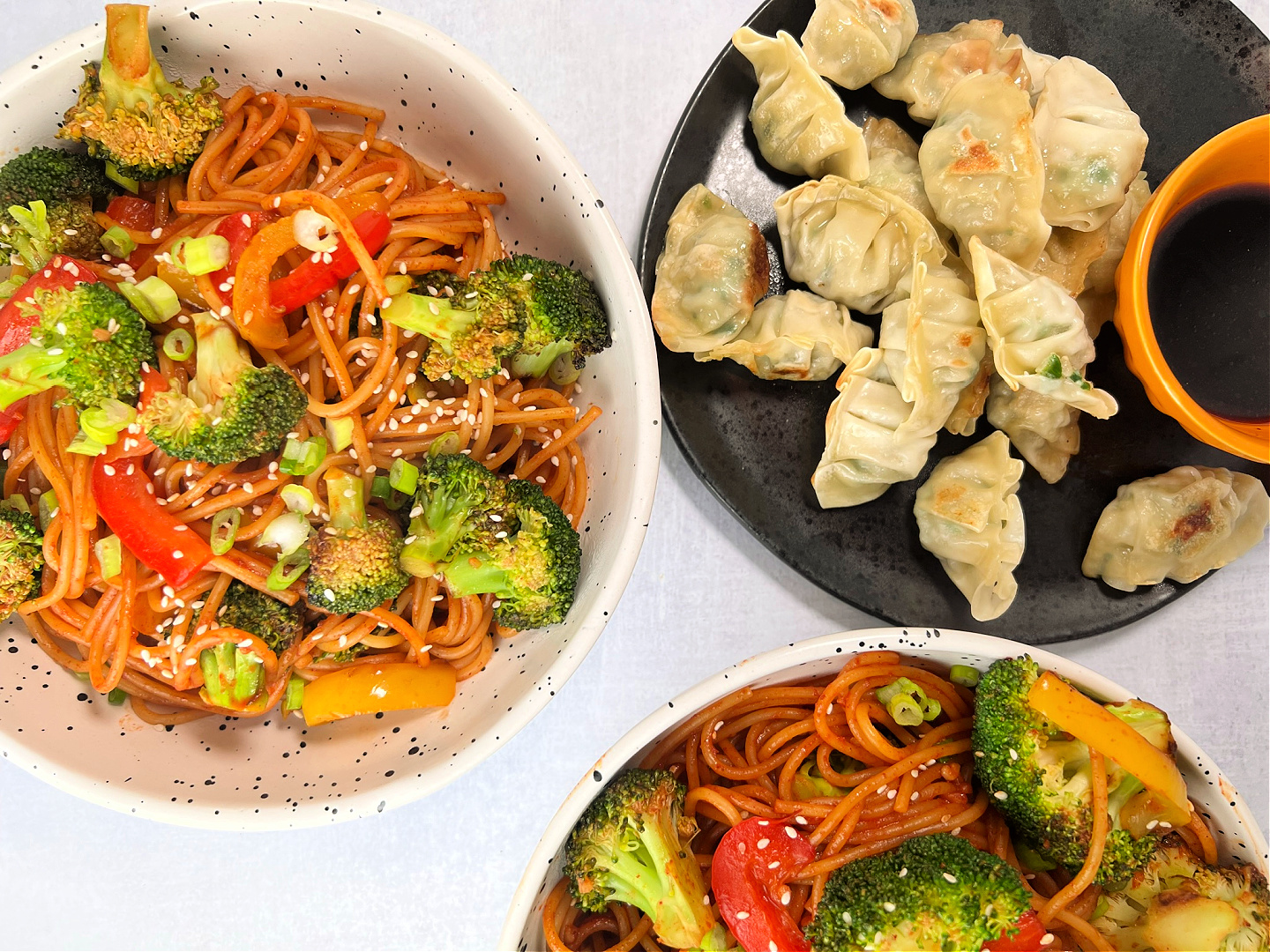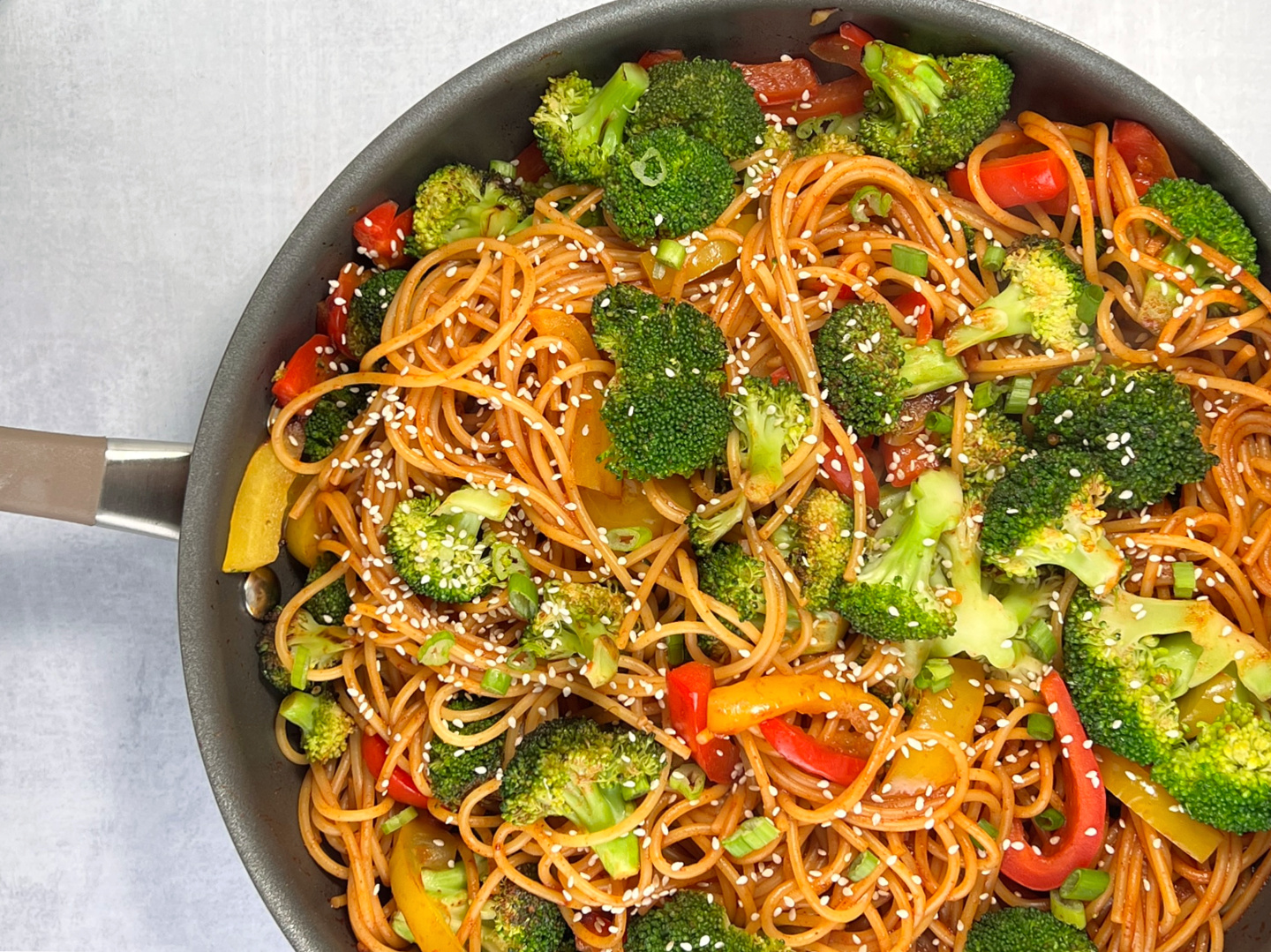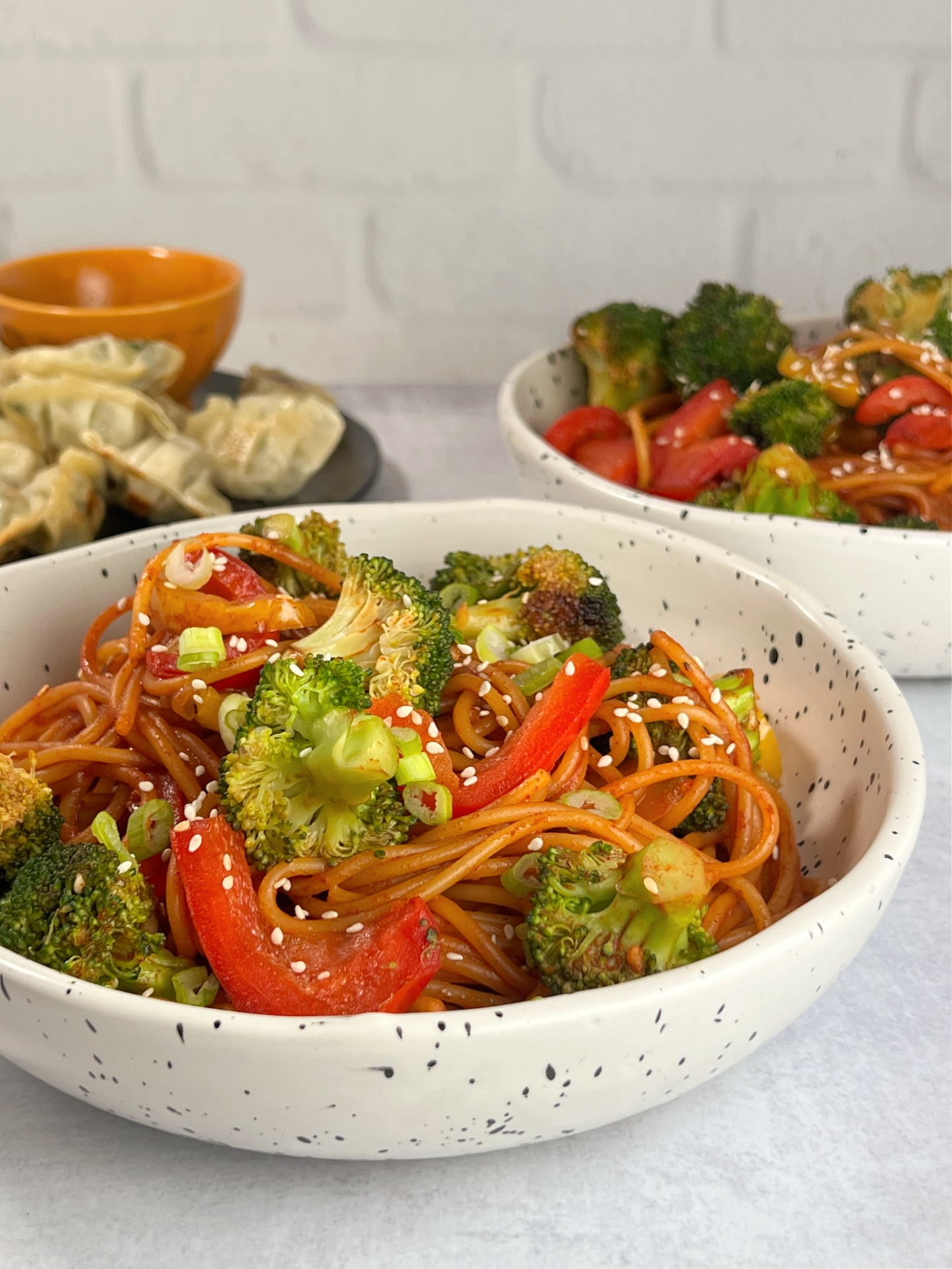A little sweet, a little savory. Saucy noodles that are packed with flavor and veggies? Totally my jam. I love the colors in this one and it always solves the leftover Gochujang dilemma with a bit of butter to pull all those statement flavors together with a decadent finish.
WHAT’S NEW?
Y’all, this week is starting out BRUTAL. This body, this mama, this full-time employee…I’m not made to be playing hockey from the wee hours of Sunday on into the wee hours of Monday. But, here we are. I crawled into bed around 1:30am with my Apple Watch wildly impressed and curious as to what type of midnight activities I’m up to. I normally have trouble sleeping after hockey but that was most definitely not the case last night.
Perhaps I was tired from the day trip to Chicago to see my family and my niece and nephew. My 1-month-old nephew is good for the soul. I enjoyed every second of baby snuggles and had to fight off both my parents and my children to get myyyyyyyyy baby time with him. I absolutely love, love, love babies. #BabyFever #UhOh #ThatShipHasSailed
ROLL CALL FOR THIS RECIPE
- Weeknight warriors: ready in 30 or under, this veggie-packed meal is whipped up in a flash! Get your pasta water going first, veggies next, and then the sauce comes together in a matter of just a few short minutes. Then toss it all together with a bit of butter and pasta water, if needed, and that’s all there is to it!
- Meat-free peeps: Got the veggies and the noodles covered! This recipe is saucy goodness with the sweet’n spicy thing going on. You’ll love it!
KEY INGREDIENTS AND SUBSTITUTIONS
- Gochujang: A fermented red chili paste is both savory, sweet, and spicy and quite common in Korean cuisine. It is sold in most major retail grocery stores as well as online (Amazon, of course!).
- Pasta: To dramatically increase the fiber in this recipe, swap in whole wheat pasta. While whole wheat pasta takes a bit longer to cook, it is generally an easy, nutritious swap to make. I simply used what was on hand in my pantry.
- Toasted Sesame Oil: This ingredient is truly what makes or breaks so many Asian-inspired recipes for me. This nutty, smoky oil is so big on flavor, its district qualities are truly missed when swapped for another oil. That said, peanut oil is the closest substitution.
- Meat: There’s none in this recipe. Newp. But feel free to add your favorite protein – pretty much any would do swell in this dish! Tofu, too! Cook in the skillet before the veggies and remove to a plate to avoid over-cooking while you cook up those vegetables!
NUTRITIONAL MERITS
- While Gochujang is higher in sugar than soy sauce, Gochujang is about 1/3 less sodium tablespoon for tablespoon. That said, both ingredients are rich in sodium.
- With lots of colors in this dish, the bell peppers offer loads of vitamin C and the broccoli supplies additional vitamin C while also providing vitamin K, iron, and potassium.
VARIATIONS, TIPS, & STORAGE
- I’m a big-big fan of broccoli florets that are pre-floret-ed for you in the produce section. They’re always perfectly sized whereas my cuts from the stalk are always a bit less consistent. In the end this only matters for even cooking and aesthetics, as well as time saving, of course!
- Gochujang can be stored in the fridge for as long as 2 years when kept covered air tight. So, while it’s not an ingredient you may use often, it won’t go to waste, either!
- Store leftovers covered and refrigerated for up to 5 days.
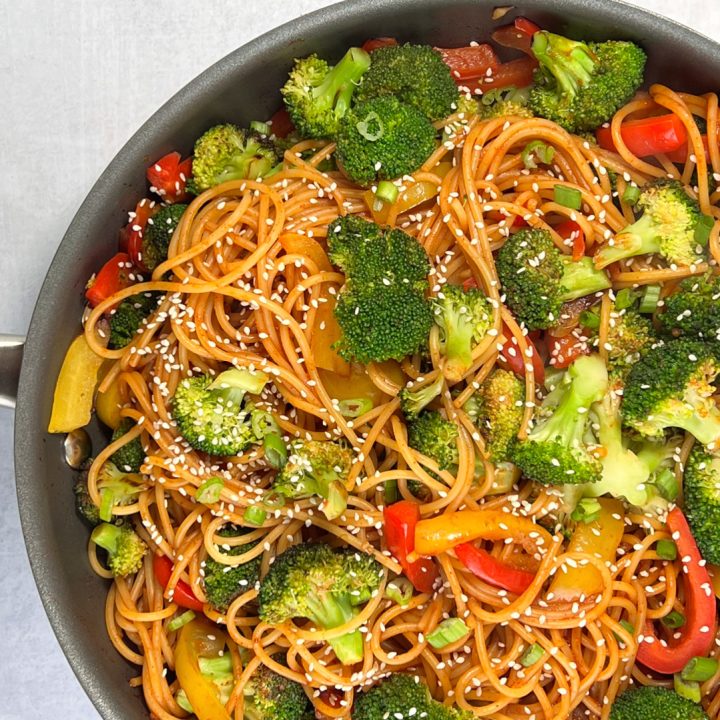
Gochujang Noodles
A little sweet, a little savory. Saucy noodles that are packed with flavor and veggies? Totally my jam. I love the colors in this one and it always solves the leftover Gochujang dilemma with a bit of butter to pull all those statement flavors together with a decadent finish.
Ingredients
Noodles:
- 16 oz dry spaghetti
- 1 Tbsp avocado oil
- 2 bell peppers, sliced
- 24 oz broccoli florets
- 4 Tbsp butter, cubed
- 2 tsp sesame seeds, for garnish
Sauce:
- 6 Tbsp gochujang
- 4 Tbsp maple syrup
- 1 Tbsp low-sodium soy sauce
- 1 Tbsp rice vinegar
- 1 1/2 Tbsp toasted sesame oil
- 3 cloves garlic, minced
Instructions
- Bring a large pot of water to a rolling boil over high heat. Add pasta and cook until al dente, according to package directions. Drain noodles, reserving about a cup of pasta water. Rinse noodles with water; set aside.
- Meanwhile, heat the oil in a large, deep nonstick skillet over medium-high heat. Add the peppers and broccoli; cook until crisp-tender, adding a bit of pasta water to prevent burning, about 6 minutes. Add the butter and allow to melt.
- Meanwhile, combine all of the sauce ingredients in a small saucepan. Whisk well and set over medium-low heat. Bring to a gentle simmer, whisking often. Simmer for 1 minute before removing from heat; set aside.
- Add the pasta on top of the veggies. Pour the gochujang sauce over the pasta and toss to combine, adding pasta water, as needed.
- Garnish with sesame seeds and serve hot.
Notes
Recipe adapted from Darn Good Veggies
Nutrition Information:
Yield: 7 Serving Size: 1/7 recipe (scant 2 cups)Amount Per Serving: Calories: 447Total Fat: 12.7gCholesterol: 17mgSodium: 477mgCarbohydrates: 68.6gFiber: 4.9gSugar: 16.9gProtein: 10.3g
Weekly Menu: January 29th – February 2nd
- Sunday: leftovers
- Monday: Easy Chicken Parmesan (made with Aldi’s chicken fillets) with spaghetti and steamed broccoli + garlic bread
- Tuesday: Stuffed Peppers with lemony green beans
- Wednesday: Chili-stuffed baked potatoes
- Thursday: Almond Flour Banana Nut Waffles with sausage and fruit
Be well,
